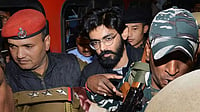Jaitapur N-Power Plant: Land For Power
- 968 hectares The nuclear plant site covers five villages: Madban, Niveli, Karel, Mithgavane, Varliwada, all in Ratnagiri district, Maharashtra
- Land acquisition ordered in 2007. Land cleared for acquisition: 968 hectares.
- 14.85 Rs-cr Compensation earmarked by the state government
- 1.38 Rs-cr Amount paid out so far
- 1.2-1.5 Rs-lakh/acre Price initially offered to villagers
- 4 Rs-lakh Later upped to Rs 4 lakh
- 10 Rs-lakh This year, the state government has offered Rs 10 lakh per acre plus one job to every family displaced by the project
- 2,400 Families affected by land acquisition
- 40 Only 40 have accepted compensation so far, but some of them are rethinking their stand
- 40,000 The plant affects the livelihood of 40,000 locals, including about 16,000 directly dependent on fishing
- 2,200 Rs-cr Land was shown as “barren” in the initial environment impact assessment reports. But the district is famous for mangoes, chiefly the alphonso variety. Annual turnover: Rs 2,200 crore. In 2003, Ratnagiri was even declared a “horticulture zone”.
***
For two days last week, large swathes of Ratnagiri district—home to the world-famous alphonso mango—shut down after unprecedented violence. April is when fishermen remain busy and orchard owners pack the best pick of the mango for Mumbai and beyond. This year, however, April brought death. Tabrez Sayekar, a 30-year-old fisherman from Sakhri Nate village, took three bullets and died on April 18 when police fired to quell a huge mob protesting against the proposed 9,900 mw nuclear power plant in Jaitapur.
The death marked a watershed in the sustained five-year history of local agitation against the plant; the area had not witnessed vandalism and violence on such a large scale all these years. Incidentally, for the first time since Ratnagiri villagers began agitating against the project, the Shiv Sena claimed ownership and leadership of the agitation.
On April 18 morning, about 400 protesters from villages that will be affected by the project, led by Shiv Sena MLA Rajan Salvi, marched to the site of the plant, hurled stones at the policemen on guard, ransacked office sheds and set fire to some machinery. The police resorted to a lathicharge, injuring many. Policemen also fired in the air and arrested about 30 of the protesters. About the same time, another mob of about 350 people converged on Nate police station, demanding the release of those held. After a war of words between police officers and agitation leaders, the mob ransacked the police station and prepared to torch it. A lathicharge and firing followed. Sayekar lost his life, and some 80 people were injured, including 30 policemen. The following day, Ratnagiri district shut down in protest.
As vandalism and violence took over this green coastal belt, Salvi’s leader watched from a safe distance. Uddhav Thackeray, executive president of the Shiv Sena, had toured the area in early April, canvassing for a complete halt to the project and addressed a large public rally on April 9. In the intervening days, the state home department received intelligence that the area might witness violent protests, a fact home minister R.R. Patil admitted in the assembly. But as Salvi led Sena activists and locals on Monday, Thackeray, who still finds time for his hobby of wildlife photography, was taking in the sights of the Kanha National Park in Madhya Pradesh with his political aspirant son Aditya.
Thackeray is treading on precarious ground. It’s difficult, as some analysts point out, not to see motives in the Shiv Sena parachuting into the five-year-old local agitation. It needs to recover lost ground in the Konkan belt and could do with the political mileage accruing from a popular agitation. The party lost some of its hold over the region after Narayan Rane switched loyalty to the Congress six years ago. This was Uddhav’s best moment to put Rane in place and reclaim leadership in the Konkan. Also, with local body elections ten months away in prestigious Mumbai and Thane—which have large numbers of migrants from the Konkan—the Sena needs to demonstrate its concern for the area.
Contrast the April 18 protest with the one in December 2010. Then, nearly 6,000 protesters had marched across the villages calling for a total halt to the Jaitapur project. There was sloganeering and singing. There were sit-ins at police stations and no less than 1,500 of the protesters were arrested. But the anti-government sentiment had not resulted in vandalism.
In his cynical attempt to score points, Uddhav has caused damage to the agitation itself: one, he stymied a Hazare-type agitation in New Delhi planned by local organisations and may have fractured the anti-Jaitapur agitation into Sena and non-Sena-led ones; two, he introduced a needlessly violent strain into a legitimate protest that had been relatively calm even in the face of severe repression through all these years.
Justice B.G. Kolse Patil (retd), former judge of the Bombay High Court, who led the December march and was held for five days, says: “We completely disagree with the kind of agitation the Sena is spearheading. No one can take the law into their hands.” Vaishali Patil, convenor of the Konkan Vinashkari Prakalp Virodhi Samiti, one of the four organisations agitating, says the people’s struggle could turn “violent and communal if political parties began to cash in”.
However, post-agitation too, the Sena suffers from a confidence deficit in the region, for hardly anyone here has forgotten its flip-flop on another mega power project of the 1990s. “After vowing to throw the Enron project into the Arabian Sea, it renegotiated and augmented the project when it came to power in 1995. How do we know Uddhav won’t do the same with Jaitapur?” asked Patil.
Besides, its agitation record is flawed. The Sena has led violent agitations against a power company for “inflated consumer bills”, toll road operators for high rates and private hospitals for not admitting poor patients, but always withdrawn before resolving the issue.
The violent turn the Sena has imparted to the Jaitapur agitation has put its ally, the BJP, in a quandary. Eknath Khadse, BJP leader and leader of the opposition, raised the issue of police violence in the legislature this week but even he knows he cannot go far. For, after an internal study in late January, the BJP decided it would support the nuclear plant. At the centre too, the BJP has supported nuclear energy initiatives and its government in Gujarat has planned two such plants.
Union environment minister Jairam Ramesh and Maharashtra chief minister Prithiviraj Chavan have since said “there will be no rethink” on the project itself but compensation could be reconsidered. Chavan’s repeated attempts to win over villagers have been rebuffed. He is conscious that several Congressmen in the state have privately questioned the project, especially after the Fukushima disaster. Protesting villagers, who heard Congress spokesperson Abhishek Manu Singhvi ask on television if the government should stop the project only because local villagers don’t want it, say the project is “a test for a government that claims to be for the aam aadmi”. Jaitapur is on the boil, and nuclear energy has everything to do with it.


























